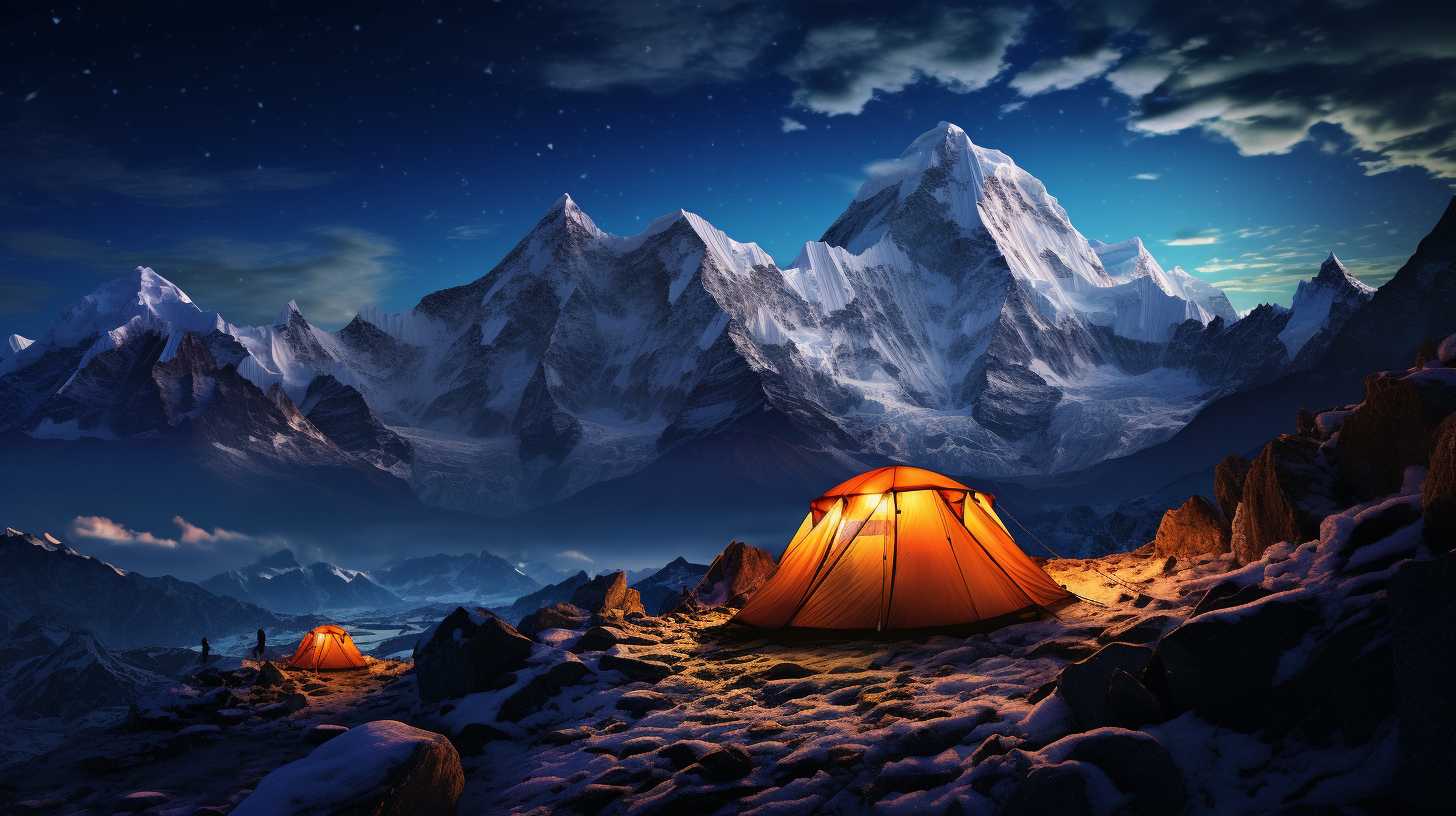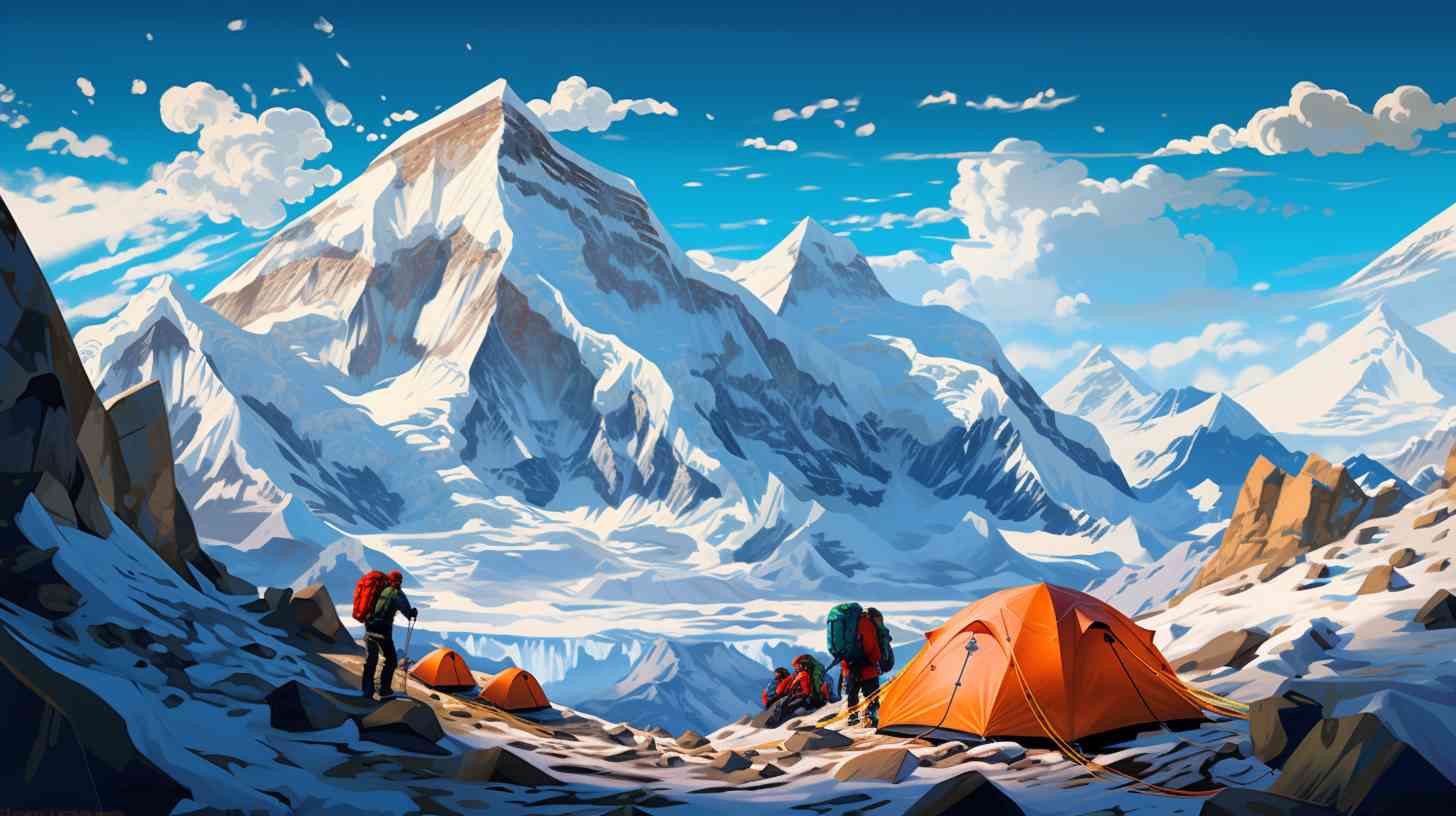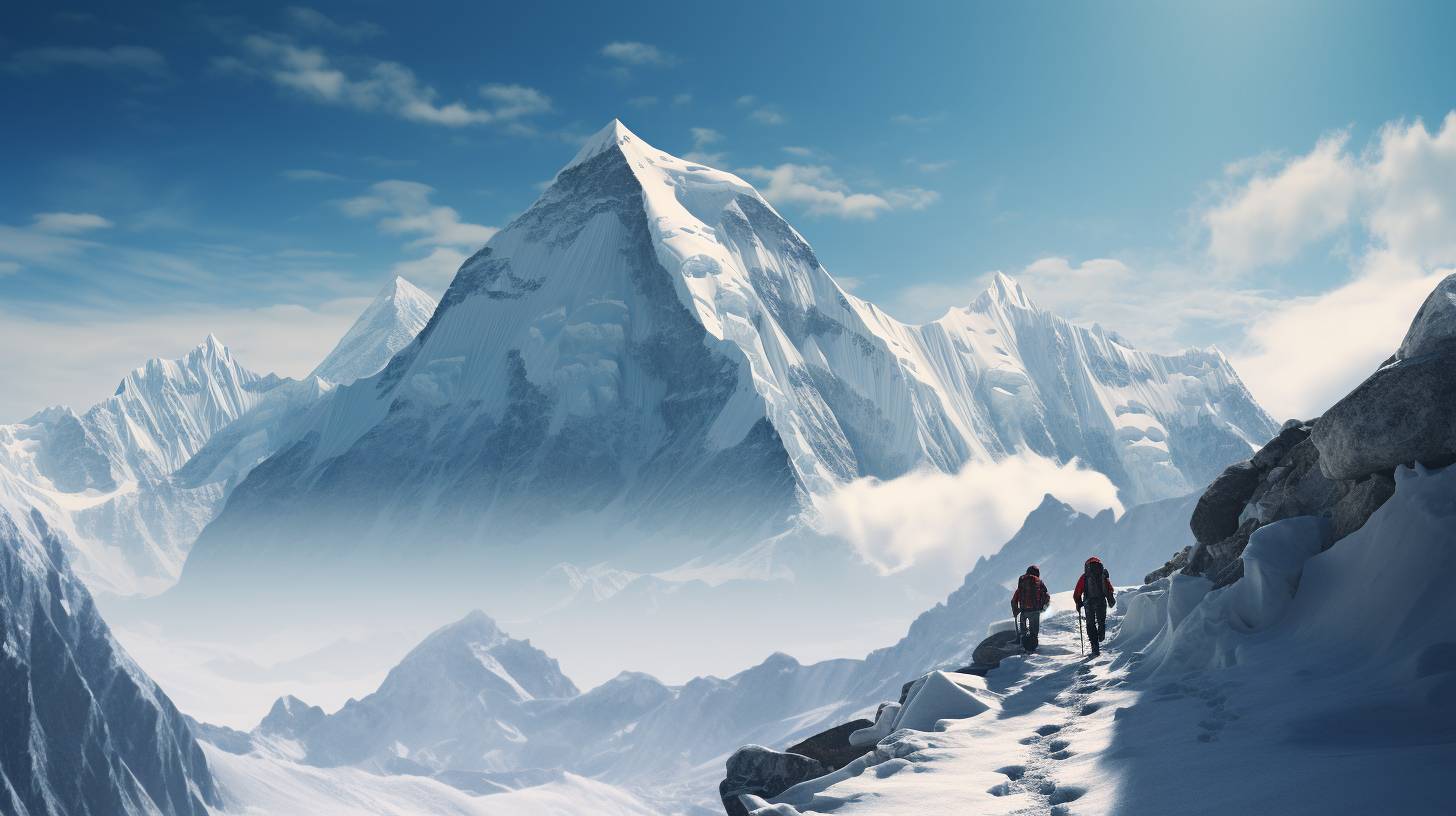
How High Is Camp 4 on Everest

Do you know how high Camp 4 on Everest is?
At a staggering altitude of 26,000 feet, Camp 4 stands as the final resting point before climbers make their push for the summit.
This crucial camp is a testament to the immense challenges climbers face in the thin air and harsh conditions.
In this article, we will explore the significance of Camp 4’s altitude and the adjustments climbers must make to conquer the world’s highest peak.
Key Takeaways
- Camp 4 is located at an elevation of approximately 26,000 feet (7,925 meters).
- It is situated in the notorious ‘Death Zone’ where oxygen levels are dangerously low.
- Climbers experience physiological effects such as headache, fatigue, nausea, and shortness of breath.
- Extreme cold can reach temperatures as low as -30 degrees Celsius (-22 degrees Fahrenheit).
The Significance of Camp 4’s Altitude
When you reach Camp 4 on Everest, you’ll realize the significance of its altitude. At an elevation of around 26,000 feet (7,925 meters), Camp 4 is situated in the notorious ‘Death Zone,’ where the oxygen levels are dangerously low.
The physiological effects of high altitude become more pronounced here. Your body will struggle to cope with the reduced oxygen, leading to symptoms like headache, fatigue, nausea, and shortness of breath.
To combat these effects, climbers employ acclimatization strategies at Camp 4. One common method is to spend a few nights at lower camps, gradually ascending and allowing the body to adapt to the thin air. Another approach is to use supplemental oxygen to provide much-needed oxygen to the body.
These strategies are crucial in preparing climbers for the final push towards the summit.
Understanding the Altitude Challenges on Everest
To fully understand the altitude challenges on Everest, you must confront the physical and physiological obstacles that come with summiting the world’s highest peak. The acclimatization process is crucial in preparing your body for the extreme altitudes.
As you ascend, the air becomes thinner and the oxygen levels decrease significantly. This leads to a range of physiological effects on the body, including increased heart rate, shortness of breath, and reduced cognitive function. Your body will also experience changes in blood pressure, production of red blood cells, and metabolism.
These challenges require a meticulous acclimatization process, allowing your body to adjust gradually to the altitude and minimize the risk of altitude sickness. Understanding the physiological effects is essential for climbers to safely navigate the treacherous heights of Everest.
The Location of Camp 4 on Everest

Camp 4 on Everest is situated at a high elevation, offering climbers a strategic resting point before their final ascent to the summit. Located at an altitude of approximately 7,950 meters (26,085 feet), Camp 4 provides a critical acclimatization opportunity for mountaineers.
However, the weather conditions at Camp 4 can be extremely harsh and unpredictable. Temperatures can plummet to as low as -40 degrees Celsius (-40 degrees Fahrenheit), accompanied by strong winds and low oxygen levels. As a result, climbers must be well-prepared and equipped with the necessary gear to survive in such extreme conditions.
Essential equipment for Camp 4 includes high-altitude tents, down jackets, insulated boots, face masks, and oxygen cylinders. The climbers must also carry sufficient food and water supplies, as well as emergency equipment like satellite phones and first aid kits.
Adequate preparation and careful attention to weather forecasts are crucial for a successful and safe ascent from Camp 4 to the summit.
The Elevation of Camp 4: Revealing the Numbers
At an elevation of approximately 7,950 meters (26,085 feet), you’ll find Camp 4 on Everest, serving as a crucial acclimatization point for climbers. This high altitude brings along its own set of challenges and demands a meticulous acclimatization process.
Here are some key points to consider:
-
Oxygen deprivation: The air at this elevation is extremely thin, making it difficult for your body to function optimally. Every breath you take becomes a conscious effort.
-
Extreme cold: Temperatures at Camp 4 can drop to negative 30 degrees Celsius (-22 degrees Fahrenheit). The biting cold can freeze your equipment and numb your extremities, making every movement a test of endurance.
-
Physical exhaustion: Climbing to Camp 4 involves navigating treacherous terrain, including steep slopes and icy ridges. The elevation challenges your physical strength and stamina, pushing you to the limits of your capabilities.
In the face of these challenges, climbers must meticulously acclimatize their bodies to the thin air and harsh conditions at Camp 4. It’s a process that takes time, patience, and mental fortitude.
Adjusting to High Altitude at Camp 4

As you reach the high altitude of Camp 4 on Everest, you’ll need to adapt and acclimatize to the thin air and harsh conditions. Adapting to high altitude is essential to prevent altitude sickness and other health risks that can arise at such extreme heights.
Your body will need time to adjust to the decreased oxygen levels and lower atmospheric pressure. To aid in this process, it’s crucial to have a slow and gradual ascent, allowing your body to produce more red blood cells to carry oxygen efficiently.
Hydration is also vital to combat the effects of high altitude. Drinking plenty of fluids will help prevent dehydration, which can worsen altitude sickness symptoms.
Additionally, it’s important to listen to your body and rest when necessary, as overexertion can exacerbate the effects of high altitude.
Conclusion
Congratulations! You’ve reached Camp 4, a majestic haven perched high above the clouds on the towering Everest.
At a mind-boggling altitude of around 26,000 feet, this is where the brave climbers face the ultimate test of their endurance and resilience.
The air is thin, the atmosphere is challenging, but those who conquer Camp 4 are rewarded with breathtaking views and an indescribable sense of accomplishment.
So gear up, push your limits, and embrace the triumph that awaits you at this extraordinary altitude.
Disclaimer: Some information is provided through AI. Users should always conduct their own research and consult with qualified professionals before making any decisions.Affiliate information declaration: We may earn revenue from the products referred on this page and participate in affiliate programs.


